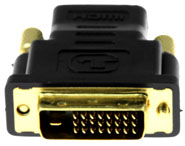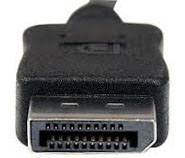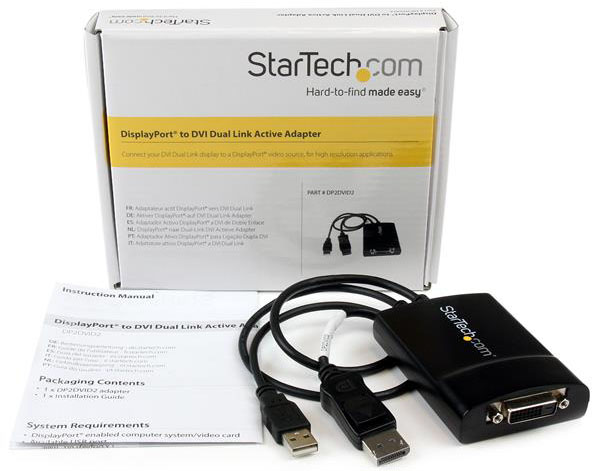Vr Mapping |
ON-LINE REFERENCE DOCUMENTATION CARDINAL SYSTEMS, LLC
|
Monitors

A wide range of monitors are supported by the recommended graphics cards for Vr Mapping. Workstations may consist of multiple monitors which include 3D stereo capable monitors and non-stereo monitors and may be driven from a single graphics card. See NVIDIA 3D Vision Package for information on stereo compatible monitors.
The trend in display technologies is toward non-CRT display screens such as LCD monitors. The use of CRT type monitors in virtually non existent today.
Vr Mapping's 3D stereo applications such as VrTwo and VrThree (VrLiDAR) require a 3D monitor. These monitors are designed to display 3D and use a recommended refresh rate of 120Hz. Typically, higher and lower refresh rates are available but Vr Mapping recommends 120Hz. Secondary, non-stereo monitors may be configured and may display 2D windows and program dialog boxes and menus. The display of 3D stereo on a monitor at less than 120Hz may produce noticeable image flicker
If any of the Vr Mapping products except for VrTwo and VrAirTrig is being used then an LCD monitor will work well. This includes VrOne, VrConfiguration, VrOrtho, VrMosaic, ImageUtility, VrVolumes and VrBalance. Any application that displays 3D stereo will show flicker on an LCD monitor. NOTE: A feature of VrOne is the 3D viewer that is designed to display vectors in 3D. There are two modes to this viewer; 3D in which the display in which the vectors are in a perspective 3D view and 3DS (3D Stereo) in which the display is in a 3D view which requires a stereo card and stereo glasses.
There are two popular display interfaces available on today's graphics cards and monitors. The DVI (Digital Visual Interface) interface was introduced in 1999 and is available on many current and older 3D monitors. While still popular, it is being replaced by the newer DisplayPort interface which was introduced in 2008. The Dual-Link DVI interface and the DisplayPort interface are both capable of 3D stereo display. It should be noted however, that an NVIDIA 3D Vision supported monitor must be used for both of these interfaces. There are monitors available that support the DVI and DisplayPort interface but are unable to properly display 3D stereo. It should also be noted that the HDMI (High-Definition Multimedia Interface) display interface does not have the ability to display 3D stereo and is not discussed here.


Dual-Link DVI (left) and DisplayPort (right) connectors.
Shown above are the Dual-Link DVI and the DisplayPort cable connectors. Notice that the DVI connector contains all available pins. Cables for non-stereo monitors may not contain all available pins and will not produce 3D stereo.
A NVIDIA 3D Vision supported monitor must be used for 3D stereo viewing with Vr Mapping. Information about supported monitors along with other information can be found at NVIDIA System Requirements. Also see DisplayPort Notes below for a list of supported NVIDIA 3D Vision DisplayPort monitors.

NVIDIA Quadro 4000 and K4200
The NVIDIA Quadro 4000 and K4200 has one DVI port and two DisplayPort interfaces. The DVI port is used to drive the 3D stereo monitor. The DisplayPorts may be used to drive secondary, non-stereo monitors.

NVIDIA Quadro M4000 and P4000
The Quadro M4000 and P4000 contain four DisplayPort interfaces. Any of these ports may be used to drive the 3D stereo monitor and secondary, non-stereo monitors. The M4000 and P4000 do not have a DVI port. Please see DisplayPort Notes below.
In the past, the 3D LCD monitors used the Dual-Link DVI port for stereo and the older graphics cards contained at least one DVI connection. Later graphics cards such as the NVIDIA Quadro M4000 and Quadro P4000 do not have a DVI connection but have multiple DisplayPorts. The 3D monitor should have a DisplayPort connection or should support NVIDIA's G-Sync connection, which is a DisplayPort with additional display hardware. Only DisplayPort monitors recommended by NVIDIA should be considered and are listed below.
Workstations may be configured with two or more LCD monitors. Multiple monitors can be 3D compatible monitors but also may be non-stereo LCD monitors. In the configuration, the stereo monitor is typically on the left and the non-stereo monitor(s) on the right.
It’s possible to use an older non-DisplayPort, DVI based 3D monitors with the Quadro M4000 or Quadro P4000 with the use of a DisplayPort to Dual-link DVI adapter. Following are 3D monitors recommended by NVIDIA that support the DisplayPort interface for non-DVI graphics cards such as the NVIDIA Quadro M4000 or Quadro P4000 (10-Feb-2017).
Acer XB240H_A
Acer XB241
Acer XB241YU
Acer XB252
Acer XB270H_A
Acer XB270HU
Acer XB270HU A
Acer XB280HK
Acer XB321HK
Acer Z271
Acer Z301C
Acer Z321Q
AOC AC352UCG
AOC AG271QG
AOC G2460PG
Asus PG248
Asus PG258Q
Asus PG278Q/QR
Asus PG348Q
BenQ XL2420G
Dell S2417DG
HP Omen X35
Lenovo Y27
Philips 272G5DYEB
ViewSonic XG2703
A Dual-Link DVI stereo monitor with a DisplayPort to Dual-Link DVI adapter may be configured. The StarTech DP2DVID2 adapter is recommended in this configuration. The DisplayPort to DVI adapters are 3rd party products and may require a reboot from time to time by un-plugging and re-plugging the USB cable.

StarTech DisplayPort to DVI Dual-Link Adapter
Document revised: December 2017